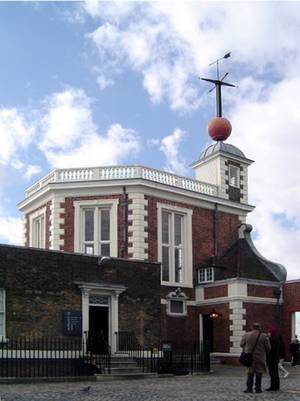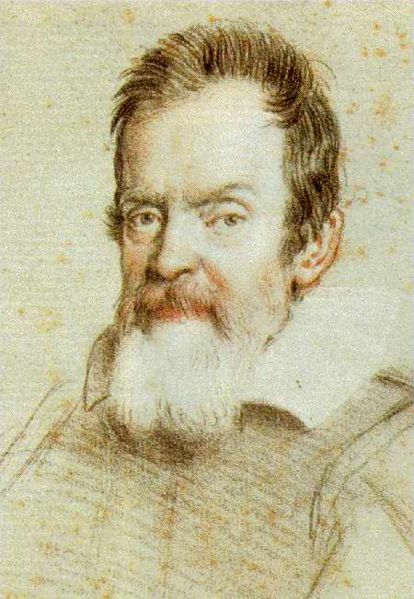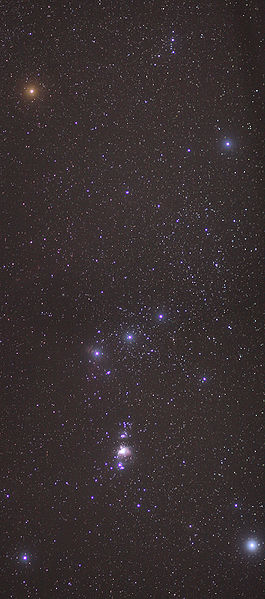Celebrating the International Year of Astronomy
Interview with
Meera - This week, I'm at the Royal Observatory in Greenwich for the UK launch for the International year of Astronomy. There's loads going on here tonight, including telescope viewings, models of early telescopes and planetarium shows. Amid all these events I've tracked down Steve Owens who's the UK coordinator for the International Year of Astronomy. Steve, what are your aims for celebrating astronomy this year?
 Steve - We're looking to use the International Year of Astronomy as an opportunity to inspire people, to make them enthusiastic and astronomy, to find out things they haven't found out before, to go outside at night and look up at the sky. That will hopefully have the effect of increasing the number of scientists we have in the UK and help the UK develop its science.
Steve - We're looking to use the International Year of Astronomy as an opportunity to inspire people, to make them enthusiastic and astronomy, to find out things they haven't found out before, to go outside at night and look up at the sky. That will hopefully have the effect of increasing the number of scientists we have in the UK and help the UK develop its science.
Meera - To get people excited about astronomy this year what have you got planned?
Steve - We've got things happening around the country. The best place to find out what's happening in your area is our website:
www.astronomy2009.co.uk. We have 2000 events already on our calendar and we're getting hundreds more in every week. Local astronomy societies are planning events. University Astronomy departments are running open days, people who own observatories are opening them to the public. We have online activities, for example, we have a cosmic diary where astronomers are blogging their lives and activities. There are literally thousands of activities happening.
Meera - Are there particularly big or main events that are happening at key moments during they year?
Steve - We're focussing a lot of our activities on what we're calling spring moon watch and autumn moon watch. If you like, they're the National Astronomy Weeks for this year. They're running from the 28th March to the 5th April and the 24th October to 1st November. Those are opportunities to get everyone in the country out looking at the sky. There are other big dates, big anniversaries: for example, Thomas Harriet, who was the British Galileo - he beat Galileo to it in 1609 on July 26th. He observed the moon through a telescope for the first time. No one had ever done it before. Galileo did it a few months later but Galileo was a good self-publicist. He told people about it and became famous. Thomas Harriet didn't tell anybody and therefore is not consequently very famous. We are celebrating his life and his achievements in the very place he observed, exactly 400 years to the day after he made his observation.
Meera - I'm now here with the Astronomer Royal and President of the Royal Society, Professor Lord Martin Rees. In the 400 years since Galileo made his observations, what do you think the main discoveries in the field of astronomy have been?
 Martin - Galileo was the first person to use an instrument to enhance what you could see which the unaided eye. Astronomy has always been at the forefront of technology, ever since that time. Here at the Royal Observatory precision instruments were made to determine longitude and measure time. Now, of course our knowledge of the universe is enhanced by very sensitive ways of detecting wave light and enhanced telescopes on the ground and in space. It's always been technology that's driven science and, of course, the science feeds back into astronomy. Through those developments we have come to realise the scale of the universe and the very wide range of objects in it: galaxies, stars and planets.
Martin - Galileo was the first person to use an instrument to enhance what you could see which the unaided eye. Astronomy has always been at the forefront of technology, ever since that time. Here at the Royal Observatory precision instruments were made to determine longitude and measure time. Now, of course our knowledge of the universe is enhanced by very sensitive ways of detecting wave light and enhanced telescopes on the ground and in space. It's always been technology that's driven science and, of course, the science feeds back into astronomy. Through those developments we have come to realise the scale of the universe and the very wide range of objects in it: galaxies, stars and planets.
Meera - What would you say the main questions that remain unanswered today are?
Martin - Well we're still just beginning. I would say that we would like to understand how our universe evolved from simple beginnings about 14 billion years ago into the complex hotchpotch we see around us of galaxies, stars, atoms and, on at least one planet, a complex biosphere where we've evolved. Another thing we'd like to do is to understand the planets around other stars which have been discovered just in the last ten years. I think in the coming decades we will realise that each star we see in the sky is the centre of a retinue of planets which are just as interesting as the planets we're used to in our solar system. We may know whether there's life on some of them.
Meera - What area of astronomy are you particularly focussing on at the moment?
Martin - Well I'm interested in understand how the first stars and galaxies formed and how long after the Big Bang that happened. I'm also interested in rather more speculative questions about how big the universe is. That might sound a strange question but the part of the universe we see with our telescopes, which extends about 10 billion light years away may be just a tiny fragment of physical reality. We'd like to know how much more there is beyond what we can directly observe.
 Meera - As I mentioned, there's a whole host of activities going on tonight, one of which is a planetarium show, showing people what to look out for in the night sky this year. I'm now in the planetarium with Darren Baskill, one of the astronomers here at the Royal Observatory. Darren, what are the things people should be looking out for this year in the night sky?
Meera - As I mentioned, there's a whole host of activities going on tonight, one of which is a planetarium show, showing people what to look out for in the night sky this year. I'm now in the planetarium with Darren Baskill, one of the astronomers here at the Royal Observatory. Darren, what are the things people should be looking out for this year in the night sky?
Darren - The moon is always a beautiful sight and it's a wonderful object to look at through, even binoculars. Then there's the planets Jupiter and Saturn. They will both be visible throughout the year. The rings of Saturn you can see through even a small telescope and if you've got really good eyesight you can see the rings of Saturn through binoculars. Jupiter also has over 60 moons but four of those moons are so big and so bright we can easily see those moons in binoculars.
Meera - The sky's a pretty big thing so which direction should people be looking in to see these planets?
Darren - The planets are very bright in the night sky. In the summer if you look towards the south, at about 9/10 o'clock in the evening Jupiter will be the brightest object in that direction.
Meera - Are there any other highlight as well as planets that people can look out for this year?
Darren - Yes well early-on at the beginning of the International Year of Astronomy in the winter months will be dominated by the constellation of Orion. Look south in the evening sky throughout the winter. There's a bright red star called Betelgeuse and there's a bluer star called Rigel at the bottom of Orion. If you look for two stars, quite close to each other, but separated by a hand span at arm's length - one bright red star and a bright blue star - you've probably found the constellation of Orion.
- Previous Meningitis in Disguise
- Next Dwarf Galaxies from Primordial Clouds










Comments
Add a comment